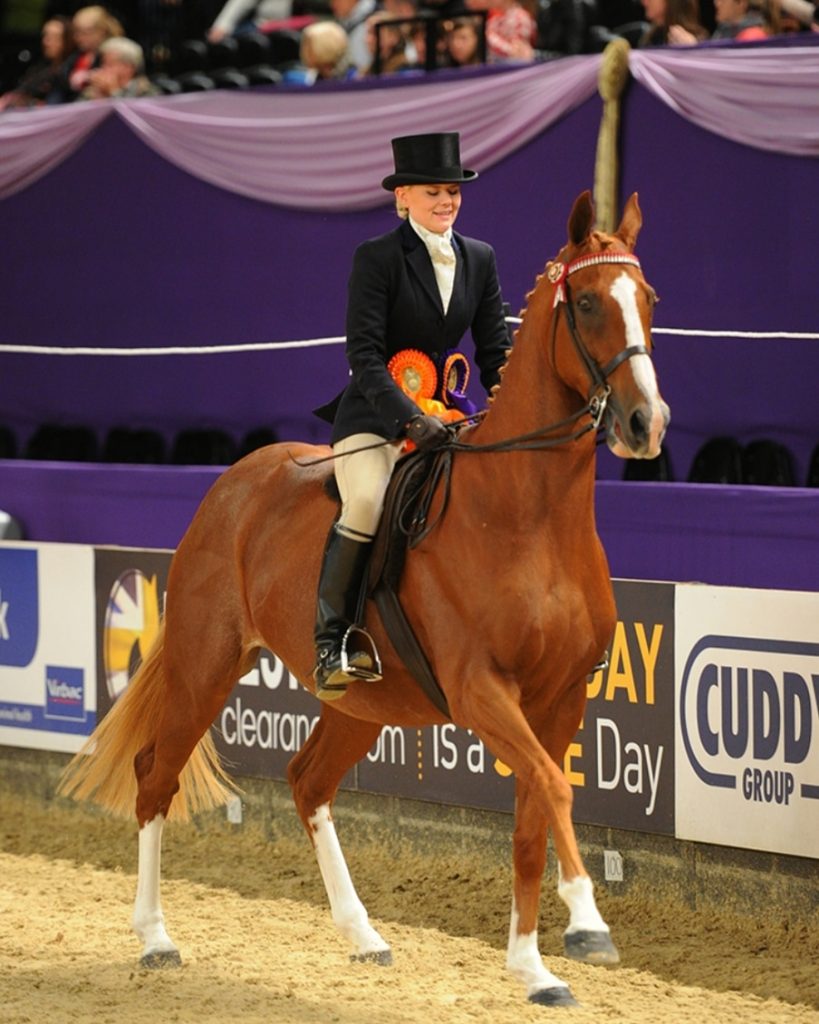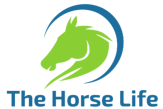
There are a range of racehorse rehabilitation centres, such as ‘HEROS’ (https://heroscharity.org/ ) and The British Thoroughbred Retraining Centre (https://thebtrc.co.uk/ ) where you can find your perfect partner.
Charities like these create loan agreements and will not sell their horses. If you wish to purchase a horse, there are various websites that have categories specifically for retrained racehorses; for example, Horse Quest: https://www.horsequest.co.uk/2/horses-for-sale/101/ex-race-horses
Another option, is to contact racing yards directly. Many yards are prepared to gift horses to suitable homes so long as a non racing agreement is completed, which means the horse cannot race again. It is important to be honest about your experience and ability so that a trainer does not gift you a horse which is not suitable for the job you want it for. For example, if you wanted to compete at county level showing, you would need to source a quality horse with good conformation and a placid temperament. Some racing yards advertise retired racehorses on their personal websites and social media platforms. It is important to note if they require any rehabilitation should they have ended their racing career due to injury. Lots of racehorses retire because they are past their performance peak.
When agreeing to take on the responsibility of a horse that is fresh for the racetrack and therefore very fit and used to a highly structured routine, it is beneficial to allow the horse some time to unwind. I believe that allowing the horse to mentally and physically detach from the racing environment is key to getting results when retraining. Just a few months out at grass allows their tummies to drop and their brains to unravel and process their new less demanding lifestyle. It is also nice to allow them to be horses and play in a herd, which many racing yards don’t offer as they tend to be stabled full time – particularly flat horses. With this in mind, make sure your fencing is robust to avoid accidents and injuries occurring when the horse is turned out for the first time!
Before starting to ride again, I like to do an equine MOT. I ask my physiotherapist to assess the horse to make sure there are no signs of pain and discomfort. The dentist checks teeth to ensure there are no problems which could impact on the horse’s education. It is also insightful to learn about their mouth conformation at this point so that a suitable bit can be chosen. I tend to begin work in a racing exercise saddle – firstly, because this is the tack racehorses are familiar with and secondly because when regular work begins, they change shape quickly. As topline develops and the horse gains weight, I book a qualified saddle fitter to fit a saddle to the horse. I would advise anyone to continue to assess the fit of the saddle throughout the retraining journey.
Companies like The Saddle Bank aim to educate their clients on saddle fit. They have online courses available to guide horse owners on saddle fitting issues: https://www.thesaddlebank.com/academy-online-horse-courses/ The course also makes reference to common issues with Thoroughbreds, like Kissing Spine.
When deciding on a suitable feeding regime, contact an equine nutritionist for guidance. I use Blue Chip Feed Balancer as it lays down condition without providing excess energy. Products can be accessed via this link: https://bluechipfeed.rfrl.co/omgq2 and £5 discount can be applied using the code SAMAO892.
I do find it amusing when equestrians claim a need to ‘rebreak’ a racehorse. Racehorses have been ridden but when ridden in a classical way, they need educating to recognise new aids. For example, shortening reins and taking a firmer contact translates to a racehorse on a gallop to quicken up yet in another discipline, this could be a rider’s attempt to slow down or collect. I think it is important to establish a relationship by working a horse with the rider on the ground to begin with. By learning to trust and recognise the rider’s voice commands, the horse will begin to relax and recognise that exercise doesn’t always mean galloping. I have had good results on the long reins and using a Pessoa training aid, to build topline and develop the horse’s mouth. Taking the first steps in the summer months rather than the winter months could be safer on a hotter horse as they tend to be less fizzy when living out at grass and on less hard feed.
When a horse appears to be comfortable and familiar with its surroundings and new role, I begin ridden work. It is nice to keep a photo and video journal to track their progress over time. Huge breakthroughs can include things we often take for granted like mastering a correct canter lead strike off. Always begin with hacking out on quiet roads. If you have access to fields but are inexperienced at riding racehorses, I would advise you not to canter in a group until you know you have breaks, especially on a former short distance flat horse, as it will be the fastest minute of your life! It is a great experience to ride out on a racing yard. I have ridden out on flat and national hunt yards, and have ridden in a charity race. I learned so much during this time.
Gradually introduce pressure free schooling activities that encourage the horse to be supple and soft. Lots of racehorses are used to going in straight lines and so even a trot 20m circle can be challenging at first. Be patient and use lots of vocal praise to encourage them to step outside of their comfort zone. Shorter schooling sessions with regular stretching breaks are key until the horse becomes physically stronger. So that a horse doesn’t get bored, I like to ride lots of transitions and shapes in each session. Pole exercises, including raised poles, are a great way of strengthening a horse’s physique whilst giving them a challenge mentally.
Before entering a competition, it is vital to see how the horse responds to travelling. Some may not have been in a trailer. Many will associate travelling with going to the races and therefore they sweat up. Start off by travelling to local venues for lessons, clinics and arena hires. If your horse is safe and sensible in the new environment after a couple of outings, then a pressure free outing could be planned; for example, an Intro dressage test, or an inhand showing class. Please be considerate when entering affiliated showing classes as the judge is often expected to ride. Practise at home by asking different riders to ride your horse. Quite often at affiliated or county level shows, the atmosphere is much buzzier and the racehorse classes are often placed in the main ring as a spectator attraction. With this in mind, make sure your horse is accepting of music playing and cantering around in a bigger group of horses. I also like to keep work varied and offer my racehorses the chance to jump too.
Retraining of Racehorses (https://www.ror.org.uk/training-and-competitions ) provides a range of competitions for racehorse owners. The charity provides prizes and prize money for each discipline and sometimes contact owners to parade horses on race days, or at their championship show. It is simple and affordable to register with the society and benefits include discounted training sessions, including access to camps with like-minded people, and eligibility to enter a range of affiliated events. I would advise anyone to read the rule books thoroughly before entering a competition to avoid disappointment. For example, horses must be shod all round to compete in ridden classes and riders can not accept any form of brand ambassador partnership if they wish to be be eligible for amateur classes.
Some horses will adapt to their new role smoothly and contently but others will take time and may continue to engage with older habits they have formed, such as windsucking, box walking or weaving. Many develop these habits over time as a coping strategy but this poses a threat of illnesses like stomach ulcers. It is important to understand and learn about the individual and to work with these issues rather than against them.
A reputable supplement provider will be able to provide additional support. I use Synovium Supplements products and can recommend Gastrosafe as a daily supplement for racehorses who have been exposed to a high cereal diet for the majority of their lives. For a 10% discount on all Synovium Supplements, use code SAMANTHA10 at the checkout.
Making sure a horse’s environment is enriching is beneficial. Horses are herd animals and like to make contact and socialise with other horses. Thoroughbreds are bred to run and so turnout time is essential for a horse’s wellbeing. The stable environment can be made stimulating with toys, mirrors, adlib forage and mineral licks.
Retraining a racehorse is a very rewarding experience. The Thoroughbred breed is intelligent, genuine and stoic. My best equestrian memories and experiences have involved a retrained racehorse. I have been fortunate enough to judge a range of Aintree and Hickstead qualifiers as a ride and conformation judge for ROR. I have also been lucky enough to retrain and rehome a variety of ex racehorses, and teach at RoR clinics.
My fondest memories are of Stevey’s Lad, my horse of a lifetime, who I qualified for HOYS in 2 consecutive seasons. He finished 7th and 9th at the final. My current retired retrained racehorse, Stilo Blue Native, was very successful in the show ring too. He scooped wins in a range of RoR Open Inhand classes as well as Aintree Novice qualifiers. He also won at NCPA POYS, was a cover star for the magazine Equestrian Life, and he was selected as the winner of the RoR Heart Awards Heart Throb Award.
Whether you are searching for the perfect partner or you are about to begin your retraining journey, good luck for 2023!
Samantha Osborne
Instagram – @samanthaosborneequestrian
Website – Samantha Osborne Equestrian





